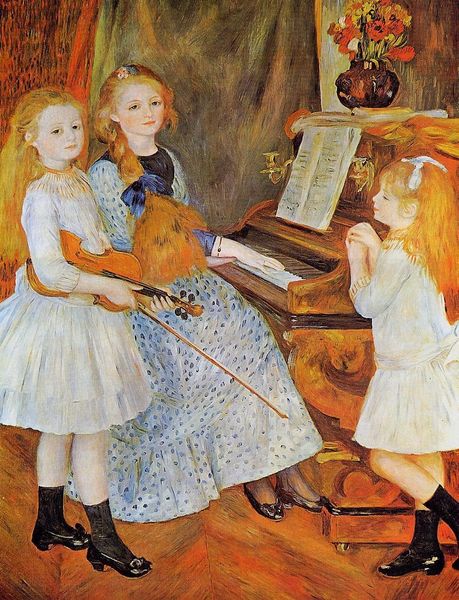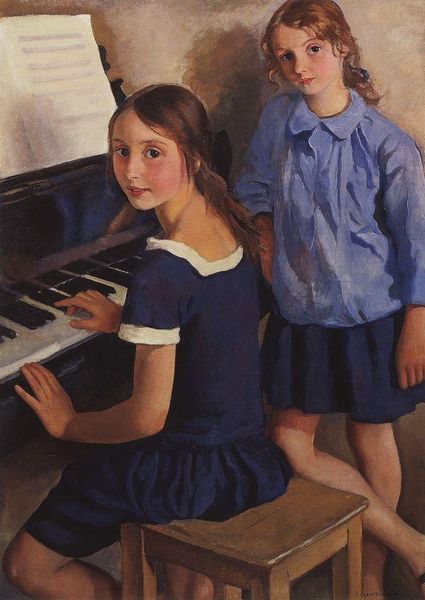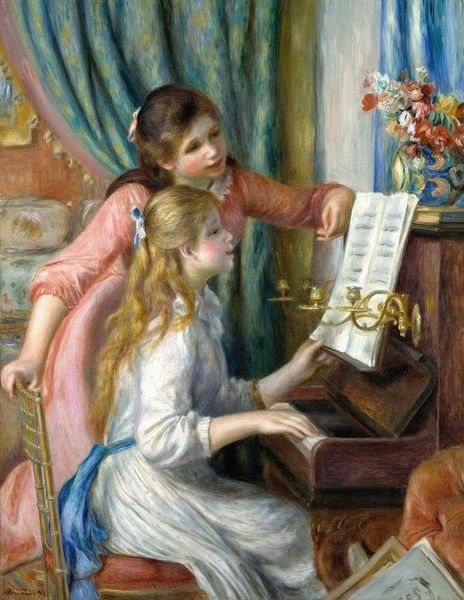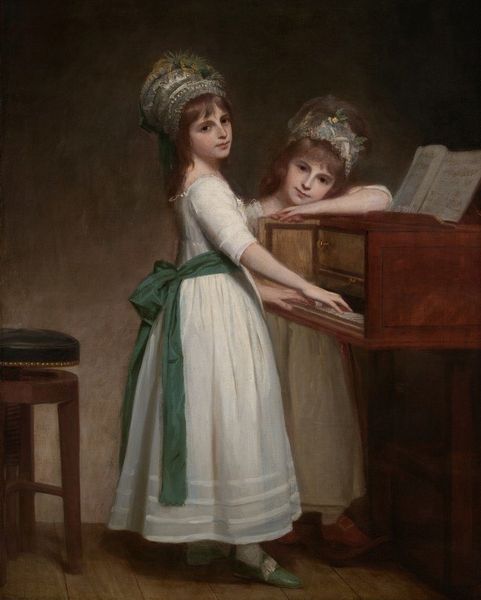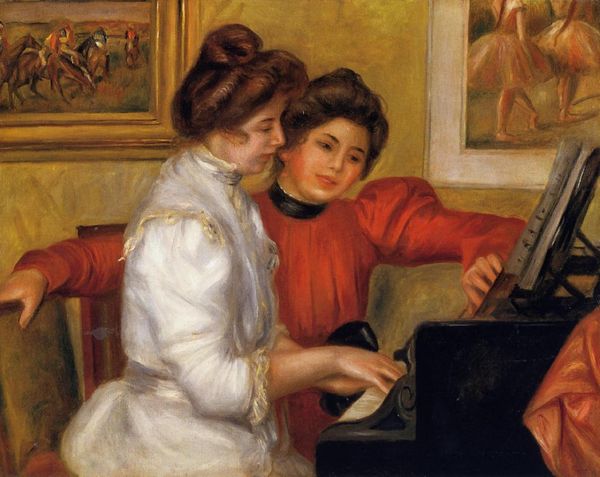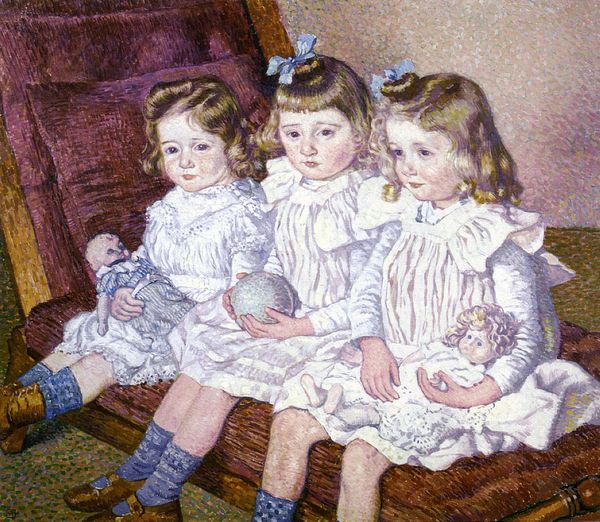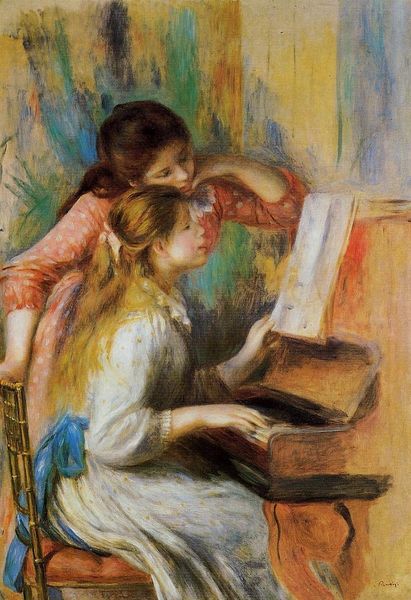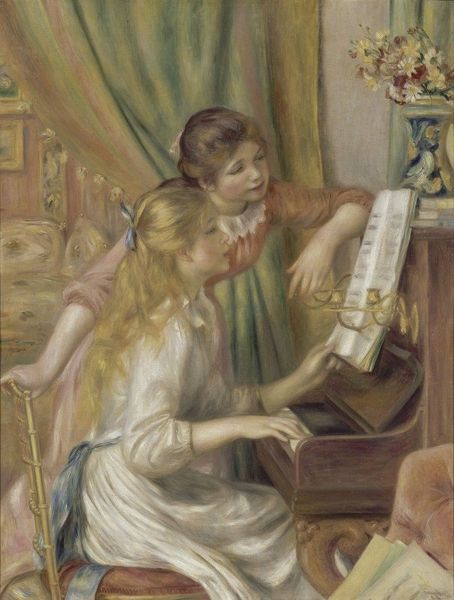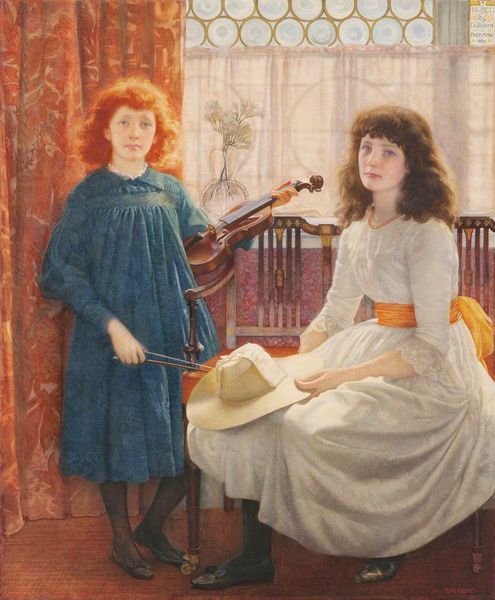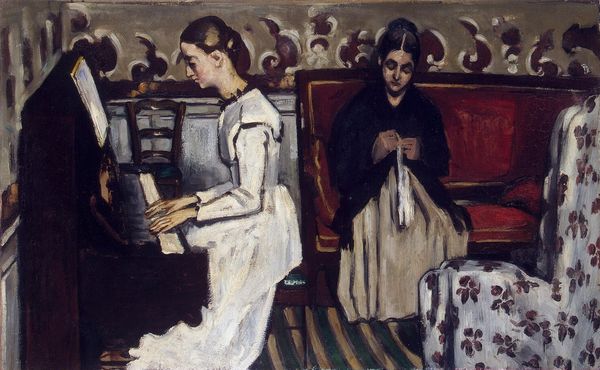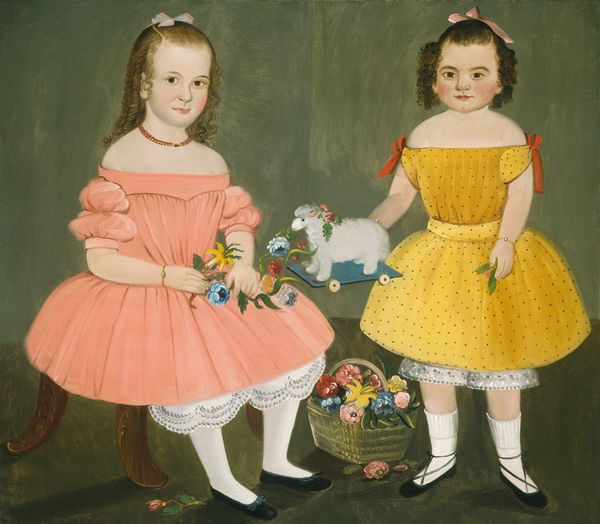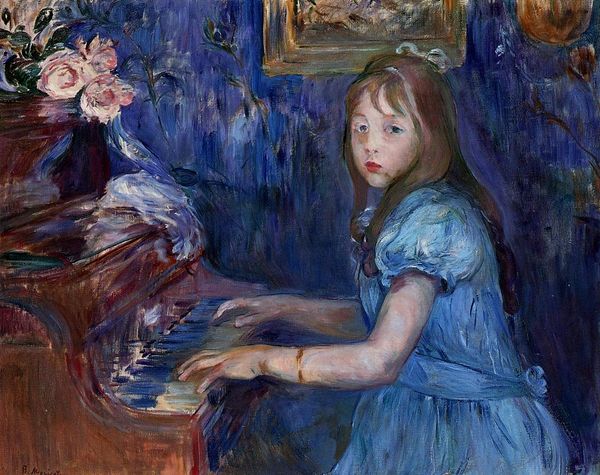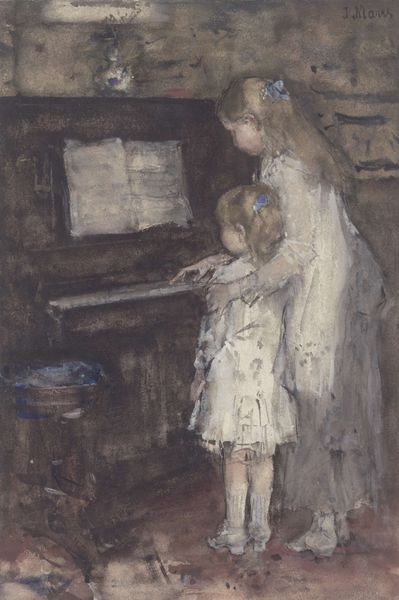
painting, oil-paint
#
portrait
#
painting
#
impressionism
#
oil-paint
#
oil painting
#
group-portraits
#
genre-painting
#
portrait art
Copyright: Public Domain: Artvee
Curator: Ah, yes, "The Daughters of Catulle Mendès" by Pierre-Auguste Renoir, completed in 1888 using oil paints. Look at how their gazes hold us. Editor: My first impression is that this is sugary sweet and a little unsettling. The light and colors are undeniably attractive, but there is an undercurrent here that troubles me. It almost feels performative in a staged scene. Curator: Staged or not, the positioning and accessories amplify meanings. Notice the blonde hair which would've resonated with then current ideas of feminine beauty. Also, consider the musical instruments: they tell a tale of bourgeois education. Editor: Right, and if we think about those dresses—the presumed labor and cost behind their production are pretty considerable. Even in his loose Impressionist style, Renoir makes sure those class markers are legible. It makes me think about Renoir’s own evolving relationship to commercial success. Curator: He certainly paints them with tenderness. See the careful treatment given to each unique expression: the gravity of the pianist, the hopeful stance of the other. There is such careful rendering of innocence here, though as you said, not necessarily authenticity. Editor: What about the piano itself, propped open displaying music notes. The flowers act as another level of decorative performance. And while it's undeniably a beautiful piece of furniture, you have to wonder about the skill that goes into building such an ornate thing, from raw lumber. Curator: The piano in the painting is both material object, as you point out, and symbolic object: music as refined practice, artistic sensitivity, family leisure and unity. So it serves these intertwined purposes. Editor: And that's what makes the scene feel both natural and slightly…constructed. Knowing about Renoir's methods is very insightful, considering that each figure involved would represent a variety of artistic collaborations behind its painted veneer. It deepens our understanding, thanks! Curator: Absolutely. Considering those visual strategies gives so much meaning to how we consider not only Renoir's work, but the period, its society, its assumptions of female education and feminine ideals.
Comments
No comments
Be the first to comment and join the conversation on the ultimate creative platform.
